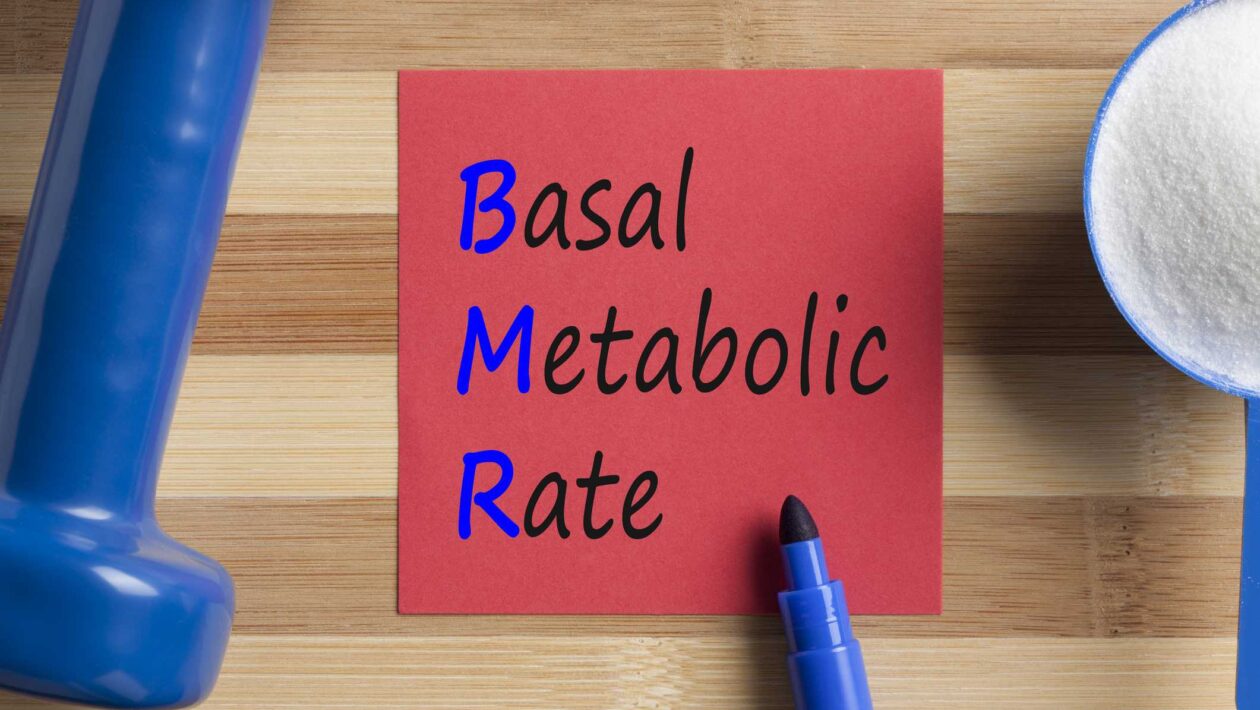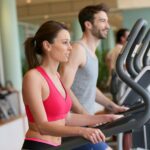Table of Contents
Your body needs effective functioning at rest. The heart pumps blood throughout the body. Or, the stomach is carrying out the digestion process. At rest, these processes need calories or energy reserves. This is what we call the basal metabolic rate. Or, in short, BMR. The basal metabolic rate calculator helps you to find your basal metabolic rate.
Basal metabolic rate is the energy aggregate burnt at rest. This happens daily. In other words, they are good calories the body needs. Most importantly, it is necessary for the proper functioning of the body. This is true even in the absence of physical activities.
At least 70 percent of total calories are used up. The first considered metric for weight loss is calories. This is where BMR comes into the story. The greater the muscle gain, the higher is the calorie burn. Consequently, lesser is the body fat.
The BMR is the baseline for any diet plan. Hence it is crucial to calculate it correctly. Consequently, the calories may be cut or added. More calories burn when you are physically active. Besides, muscle mass increases. Keep an eye on the calorie intake. This will ensure you remain fit and healthy.
The metabolic age – Basal Metabolic Rate Formula Calculator
The basal metabolic rate changes with age. It rises to peak level until 16 to 17 years of age. Following this, the rate keeps decreasing. In other words, you need to control your food intake. Eat less to lose weight and be fit.
This is how the metabolic age calculation happens. Your BMR is compared to the standard BMR. This is the average BMR of the group having your chronological age. The metabolic age may be higher than the actual age. This indicates the improvement of BMR is necessary.
Increase the exercising. This will allow more formation of muscle tissue. As a result, the metabolic age will improve. Keep track of the metabolic age. This will enable you to know the mass muscle gain throughout.
Basal metabolic rate calculation
The basal metabolic rate includes calorie mass. It allows the performance of life-sustaining functions. Here are some of the basal functions. For example, breathing, blood circulation, nutrient processing. Others may be cell production, protein synthesis, and ion transport.
Before the calculation, some terminologies need special mention.
The basal metabolic rate or BMR has been explained before. It is now coming to the resting metabolic rate. It is the calories burnt at rest. The measurement is usually done in the morning. It is measured after a full night of rest. This includes the period before any activity.
BMR and RMR are identical in many ways. Subtle difference keeps the term apart. Here, the resting metabolic rate becomes common. Most nutritionists, fitness experts use this term.
Now, how to calculate BMR? Several options are available. You may either use the formula available. Otherwise, you can get a test done. Do whichever suits you. The basal metabolic rate calculator can come in handy. None of the methods provides 100 percent accuracy. However, the lab tests may give accurate estimates.
For people on a budget, the calculator is best. This does provide a reasonably accurate estimate. You may either calculate the basal metabolic rate. Or, another option is there. It is counting the calorie burnt per day.
Grab a pen and paper. Takedown this equation. This is the Harris-Benedict equation. It provides an estimate of your BMR.
For men
BMR = 88.362 + (13.397 x body weight in kg) + (4.799 x your height in cm) – (5.677 x chronological age in years)
For women
BMR = 447.593 + (9.247 x body weight in kg) + (3.098 x your height in cm) – (4.330 x chronological age in years)
You can use the basal metabolic rate calculator online. Google to find many such calculators. You need to put in your height, age, and weight. This will allow you to find the BMR. This shows you the number of calories burnt every day.
First, change the basal metabolic rate
Several factors determine the BMR of your body. For instance, age, sex, genetic factors, and body composition. No changes in age, sex, or genes is possible. The body mass ratio is changeable. Change the fat to muscle ratio. It will help to boost your metabolism. Building more muscle will reduce the fat content in the body. Lean muscles burn more calories. You do not need to be tough to see results. Try a few weeks of resistance training. Research proves this to be beneficial. It increases RMR by 7 to 8 percent.
Second, increase the daily calorie burn
The daily calorie burn depends heavily on BMR. However, other changes can also burn more calories—for example, changes in your activity levels and diet.
Know how many calories you burn every day. Two factors other than BMR determine it. The BMR burns about 60 percent to 75 percent calories. The increase in muscle mass will cause more calorie burn. Did you know calorie expenditure occurs at rest? This is the non-exercise movement and exercise. It burns about 15 to 30 percent of calories every day. Activity thermogenesis is the term. Increasing daily activity will cause more calorie burn.
Third, know the thermic effect of food
This refers to calorie burn from digesting and eating. It includes 10 percent of the total calorie expenditure. Choose the food you eat wisely. Include protein-rich foods in your diet. Cut down on unnecessary calories—for instance, processed, sugary, and junk foods. Try to snack veggies, fruits, and healthy desserts. Keep an eye on the calorie intake. Clean eating is crucial for weight loss to occur. This allows the creation of a calorie deficit. The negative energy balances out.
Factors affecting basal metabolic rate
Here are some of the factors affecting the basal metabolic rate
Muscle Mass
First comes muscle mass. This is the muscle tissue in our body. Muscle requires more energy to function. This is greater than what fat requires. So, the muscle tissue may be more.
Consequently, more is the energy requirement. This is essential for your body to exist in general. Hence, resistance training will help to build the body. Moreover, the maintenance of body mass will occur.
Age
The second is age. With age, the BMR slows down. Much muscle tissue is lost with age. Moreover, hormonal changes occur. Lean muscle losses naturally. This causes a decrease in energy. Besides, changes in neurological processes also take place. Children grow through extreme developmental changes. This happens with an excessive metabolism rate. With age, you need to compensate for low metabolism. Eat healthier. Besides, work out hard.
BMR
The third is body size. The larger bodies have higher BMR. This is because large organ maintenance is required. Similarly, the fluid volume is maintained.
Gender
Fourth is gender. Men tend to have a faster metabolism. This is comparatively higher than women. It is true despite age.
The Genes
Fifth is genetic foundations. Some families may have higher BMR. One cannot change the hereditary factors. Exercise regularly. Have a balanced and consistent diet. Besides, keep the sleeping pattern healthy. This will increase the metabolism of the body.
Activities
Sixth is your level of activity. The higher the level of activity, the more calories are burnt. In other words, make the physical activities more intense. Even a 10-minute HIIT workout is enough to burn calories. It is equivalent to 30 minutes of cardio. This will allow for lean mass growth. Hence, more calorie burn will occur. As a result, BMR will increase. This assists in your metabolism. Thus, closer, you will move towards the weight loss goals.
Hormones
Seventh is hormonal factors. The hormonal imbalances may persist over time. You may have it by birth. Or it may occur more with aging. With age, the hormonal changes increase.
Moreover, changes are frequent after puberty. Now your body is going through several changes. Hypothyroidism or hyperthyroidism may occur. Consequently, it will affect the metabolism.
Environmental factors
Next are environmental factors. Sudden environmental changes may affect the basal metabolic rate. In particular weather, the body works harder. As a result, BMR increases. This means more calories are shed. Hence the calorie intake maintenance is crucial. This will make sure your body has a stable BMR.
The drugs
Following the weather changes come the drugs. This involves caffeine, as well as medication. Coffee, tea, and caffeinated drinks increase BMR. Certain medications tend to increase overall body weight. This happens, no matter how calorie deficit you are—for instance, anti-depressants and steroids. As a result, the body needs to work harder. Hence, consult the doctor before further weight loss plans.
Now comes the diet. Intense workouts will in no way reduce the body weight. Nor will it allow lean mass production. Hence the diet and calorie intake need a restart. Some foods will increase your metabolism, whereas others will decrease it. This will have a sustaining effect on BMR.
Reasons behind individual differences in BMR
Individual differences are present everywhere. That is what makes them unique. In a study, 150 adults represented the Scotland population. The BMR values showed extreme variation. It went as low as 1027 kcal/day. This reached up to 2499 kcal/day. The average basal metabolic rate was 1500 kcal/day.
Individual differences were constant in people with the same lean body mass. Researchers found varied results, as well.
Biochemistry
Basal changes in the body use a lot of energy. The organ processing expends about 70 percent of total energy. Physical activities require at least 20 percent consumption. Besides, 10 percent is used up in thermogenesis. It refers to the process of food digestion. The body follows the Krebs cycle. Oxygen intake occurs along with coenzymes. This provides the required energy for survival. The byproduct is expelling carbon dioxide.
Maintenance of fluid levels requires energy expenditure. This occurs through osmoregulation. Simultaneously, mechanical work requires one-tenth consumption—for example, heartbeat, digestion, and breathing.
The exergonic reactions are usually reactions to release energy. Besides, they are catabolic. This process is catabolism. It refers to the breakdown of large molecules into smaller ones. The associated energy release is anabolism. Besides, endergonic reactions are present. Here too, energy is an essential requirement. Muscle contraction and anabolic reactions are among others. Metabolism involves all these processes.
Adenosine Phosphate or ATP provides energy during muscle contraction. It serves as an intermediate molecule. First, it transfers the exogenic energy. It converts into an endergonic anabolic reaction. ATP is made of adenine, ribose sugar, phosphate groups. These energy molecules break up. The resultant energy helps in muscle contraction.
Glucose
The hydrogen to oxygen ratio in water is 2:1. The cells consume all the oxygen molecules. It oxidizes the carbon in carbohydrate molecules. Hence carbon dioxide formation takes place. Consequently, the complete oxidation of glucose molecules occurs. It produces six molecules of water and carbon dioxide. Therefore, six molecules of oxygen are consumed.
This is the reaction discussed above:
C6H12O6 + 6 O2 → 6 CO2 + 6 H2O
Fats
The chemical composition of fats is different from carbohydrates. The fats fall into the following categories: saturated fats, monounsaturated fats, polyunsaturated fats. Other are trans fats and cholesterol. Saturated fats need more energy to burn. This happens in RMR or BMR. The fatty acid molecule breaks. Then categorization occurs. It happens based on carbon atoms in the structure. The equation is as follows:
C16H32O2 + 23 O2 → 16 CO2 + 16 H2O
This equation is a typical example. It is that of palmitic acid.
Proteins
Carbon, nitrogen, hydrogen, and oxygen make up protein. It forms into many combinations. It usually creates amino acids. Unlike fat, protein deposits are not present. It is presented as hormones, tissues, and enzymes. These are present in different parts of the body. These areas undergo continuous breakdown.
Moreover, they even undergo replacement from time to time. The result is protein metabolism. Its respiratory quotient is:
C72H112N18O22S + 77 O2 → 63 CO2 + 38 H2O + SO3 + 9 CO(NH2)2
They can blend three macronutrients at one time. The basis is mitochondrial density. The preferred ratio established will determine the fuel amounts. This is true for work accomplished by muscles. Protein breakdown provides 10 to 15 percent energy. This is crucial for aerobic training sessions.
The primary source of ATP is aerobic. It is collected from the body at rest. Or it may be present during low activities. Carbohydrates and fats are used as substrates. Protein metabolizes during intense activities. Similar results may occur during long terms of starvation.
Longevity
The BMR varies inversely to longevity. In 1926, Raymond Pearl gave this proposition. It stated larger body size leads to a longer life. This was true in the case of mammals. Usually, they have a high BMR. But it decreases at the cellular level.
However, several contrasting results showed the opposite. The lower basal metabolic rate increased the life span. Calorie restriction is essential with age. Alongside, a reduction in thyroid levels is crucial. All this decreases BMR. Hence the humans live longer.
Medical review
Different people have different physical conditions. Similarly, physical activities differ. Weight training has a lasting impact. Unlike aerobic, its effect on BMR shows. However, no concrete evidence is available. It is unknown how much metabolism increases.
The decrease in food intake. It will eventually lower BMR. This is because the body tries conserving more energy. A study shows having less than 800 calories a day. This leads to a 10 percent lowering of BMR. This is a deficient calorie diet.
BMR changes due to the effect of drugs. For instance, antithyroid agents, drugs for hyperthyroidism. These include propylthiouracil and methimazole. It brings down the metabolic rate. Thus, it allows for the restoration of euthyroidism. Again, obesity drugs may increase BMR because it stimulates thermogenesis in skeletal muscles.
Any stress or illness increases the rate. The same results come from elevated diabetes levels. Besides, menopause affects the rate of metabolism too. The rate starts decreasing with age.
Cardiovascular indications
Pons and medulla oblongata determines the heart rate. They are located on the inferior part of the brain stem. Heart rate is crucial for BMR and RMR. It stimulates the Krebs cycle. Gradually it supplies blood throughout the body.
Anaerobic threshold is achievable during exercise. Substrates are essential for utilizing optimum energy. The anaerobic threshold is the level of energy utilization. Here the exertion of heart rate occurs without oxygen. This happens in standardized tests. The protocol for accuracy and measurement is followed—for instance, Bruce Treadmill protocol.
Carry out target training for four to six weeks. The body system eventually adapts to high migration levels. This goes for mitochondrial density. Hence oxygen levels increase for Krebs cycle. The same happens for glycolytic and tricarboxylic cycles. Hence the resting heart rate lowers. Similarly, blood pressure lowers. Conversely, the BMR or RMR increases.
Measuring the heart rate is necessary. This allows us to know the substrate utilization levels. At rest, it causes biochemical metabolism in the body. Similar results are found during activity. Studying a graphical representation shows some results. Remember, this goes for the anaerobic threshold. It helps to maintain apt levels of consumption and utilization.
Blood tests and gas analysis may confirm this. It uses calorimetry to show substrate utilization. Hence BMR and RMR are essential for healthy body weight.
Concluding
Take a positive step towards your health. Know how to calculate the basal metabolic rate. It will provide you long-term benefits. This article covers ways to calculate BMR. It also has a list of factors affecting BMR. Lastly, the mechanism and utilization are listed. I hope this article answers your questions.











